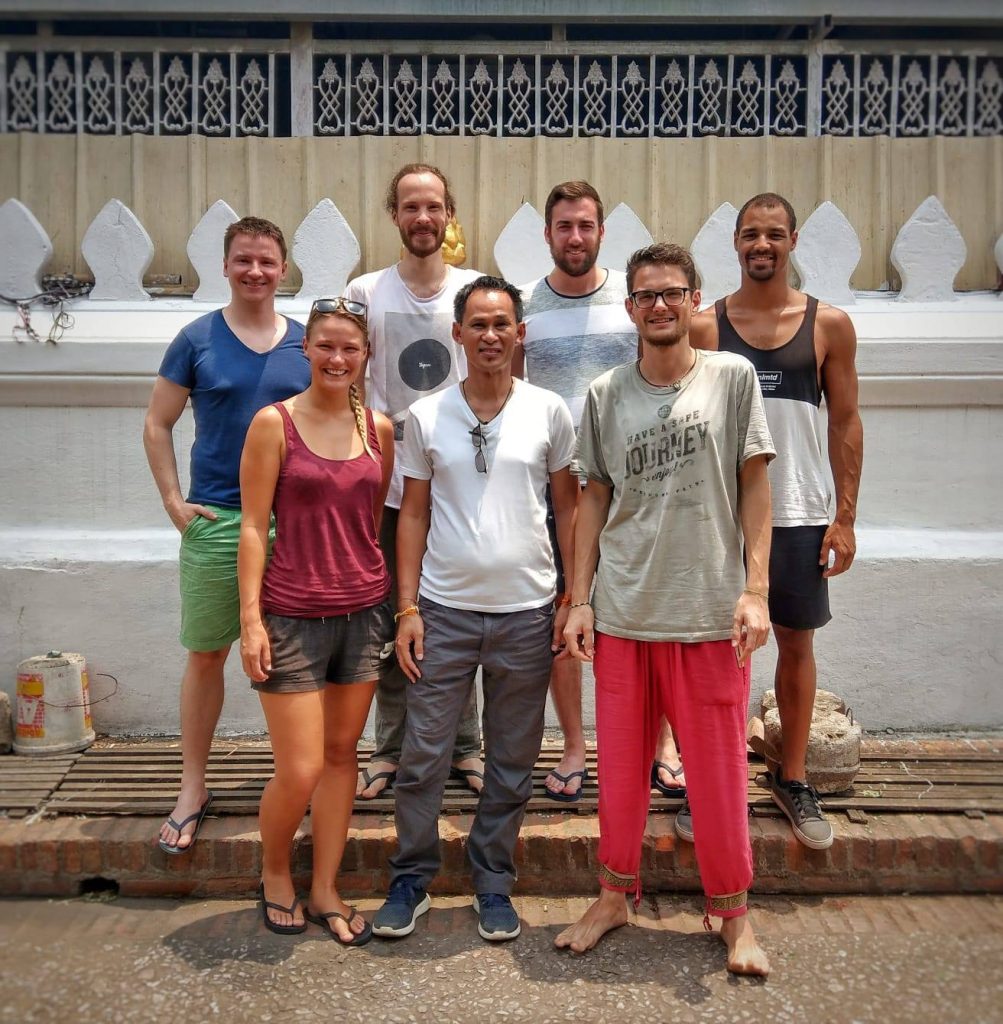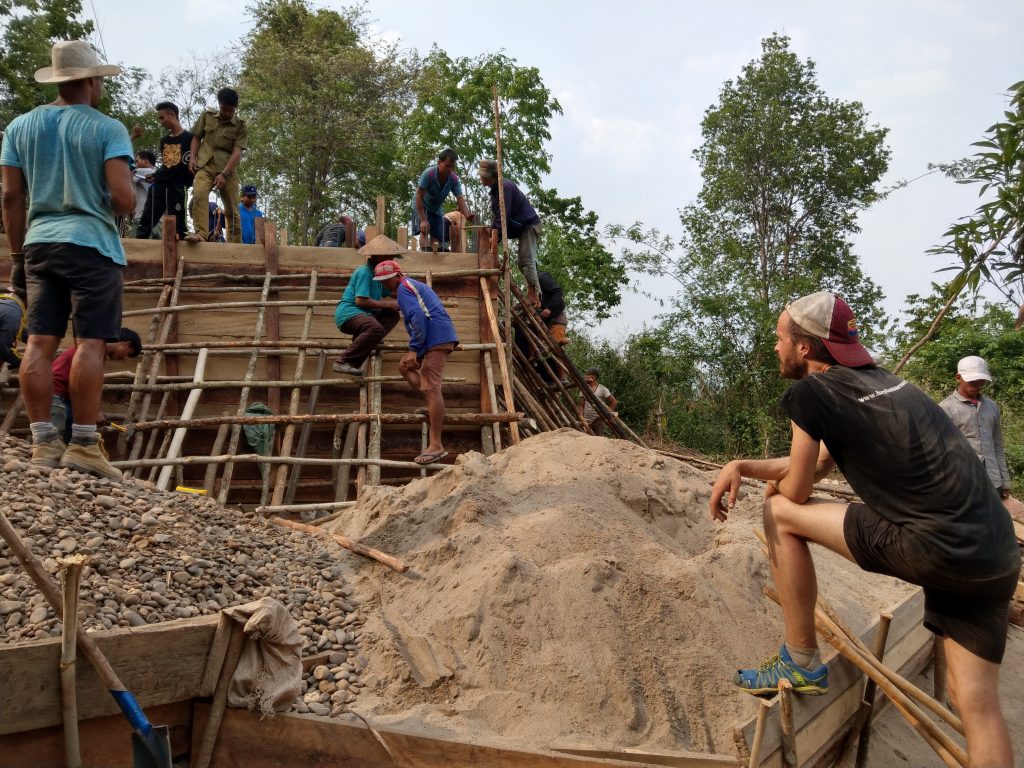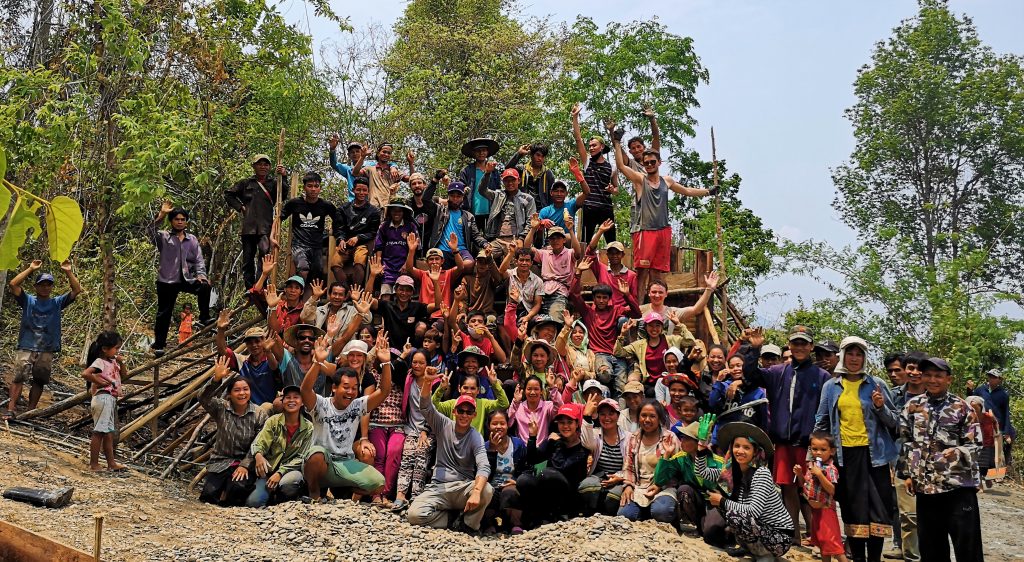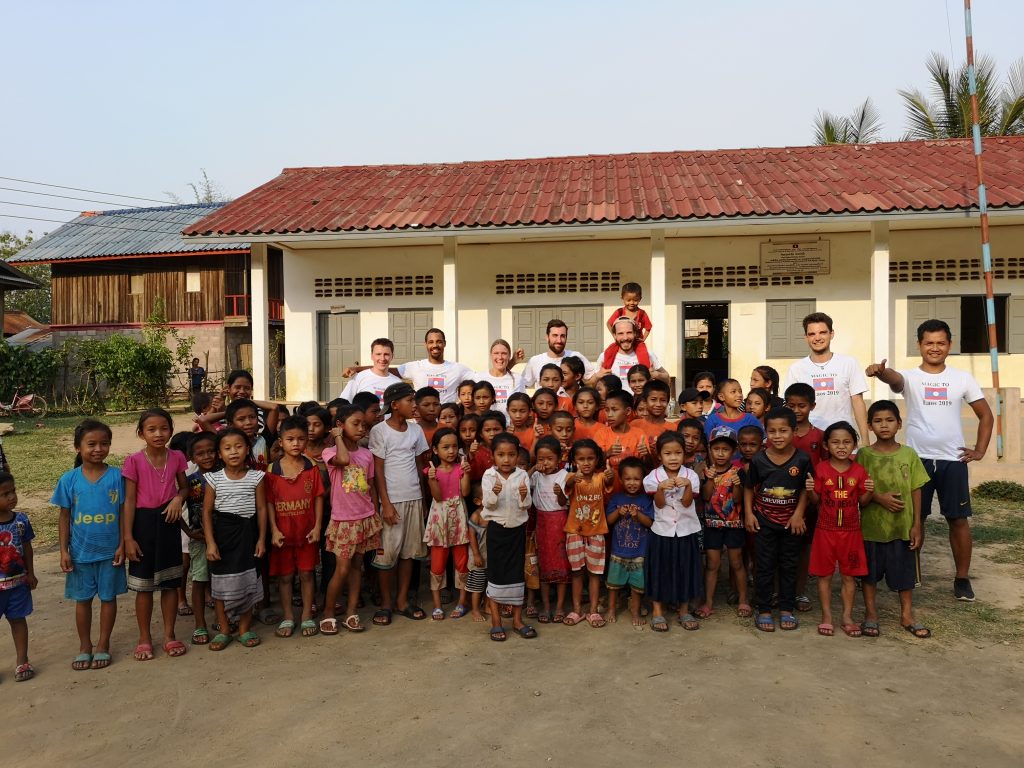or here to Download from Google Drive
Laos is a landlocked country and the least developed country in Southeast Asia. Rural areas in particular are still very underdeveloped, with a lack of resources for good education, hygiene and clean drinking water. This is where our friend Oun and his organization VolunTour-Laos come in: with small but effective projects, the population of the villages in the region north of Luang Prabang should be supported in their daily life.

Construction of a gravity-based water-flow system for the village of Kwok Ngniew
The mountain village of Kwok Ngniew is just under an hour from the well-developed tourist town of Luang Prabang . The people there lead a consistently agricultural life, some of the young people work in the city. The village of about 450 inhabitants, whose population has increased significantly in the last 50 years, currently only has 5 water points, which do not supply water continuously, as the existing tank does not have enough reserves for the dry season. Oun, the director of Volun-Tour Laos, therefore suggested that we invest in a more modern water system to improve the situation.
In addition to €4,683 in donations from Magic to the World , the project, which cost approximately $22,000 in materials, was funded by Saur Solidarites and individual donors primarily in the United States. The villagers contribute through manual labor and the processing of materials found locally, such as wood and sand.
After we arrived in Luang Prabang as a team at the end of April, we first met Oun and then Dao, the project manager and our guide for the days in the mountains. After consultation with both of us, we got working materials for the upcoming assignment in the city. In addition to shovels, hoes, saws, hammers and nails, we also bought work gloves and rubber boots, since we wanted to pour concrete and this is usually done barefoot.
In addition, after consultation with Dao, we bought soap, plasters, bandages as well as disinfectants and wound healing products in order to make them available to the school later. In a small demonstration, we showed the children how to clean and bandage a wound, Dao translated, and the teachers keep the materials in case children get injured while playing.
After arriving in the village, we were warmly welcomed with a ceremony and got to know the personalities of the village board. Even if we were not the first visitors from far away in the village, we were the first group to stay there for so long and help with the physically demanding work. Despite the language barrier, it didn’t take long before we made our first friends, there was a lot of giggling and laughing and the children in particular were always curious about what we were doing.

The work on the water tank consisted of several stages: First of all, the boundary for the foundation had to be poured into the excavated pit. After this was done we filled the ground with large stones, pebbles and sand, after which the first steel framing was laid and knotted. This was then fixed with the first layer of concrete. This includes mentioning that all materials, some of which had been delivered to the village by truck, still had to be carried a good 100 meters up through the jungle to the construction site. Much of this was done manually, with the women and children of the village in particular making a truly impressive effort. On some days, a local tractor was available, although loading and unloading was a sweaty affair at 30°C.
After the steel frame was braced vertically, stable wooden formwork had to be built and braced for the walls. An important task, which also took up a lot of time, since the entire stability of the tank depended on it – an official from the local building authority even came to approve the construction! On the last day of our stay, about 100 villagers and we were able to pour the walls of the 4x4x2m tank, a real feat. The concrete was mixed directly in front of the tank on several sides, manually with a shovel and pickaxe, and then passed up with a human chain, the empty buckets down again, and so we processed several tons of material in a few hours.
In the meantime, the walls have dried and the top of the tank has already been poured. The water comes from a mountain spring about 4km away. A filter system (sedimentation) was set up there from which the water should find its way through the jungle to the tank in hoses. At least 7 new water points can now be installed in the village itself, two of them in the school. It is also conceivable that the individual houses will have a connection in the future and that toilets and washbasins can also improve hygiene. Since water from the tank will be available all year round, it can also be used to irrigate the cultivated areas in the village. The positive impact of this secured water supply will last at least 20 years last! Of course, all the working materials that were purchased have also remained in the village and are lent out there under the supervision of the village chief for the common good.

We used our day off, while the foundation had to dry, to spend time with the children and young adults of the village. In addition to an “international match” Laos vs. Germany in football, we did an English lesson with songs and games, after which we danced, sang and made popcorn. Since the money for the children’s school materials is also scarce in most families here, we have entrusted Oun and the headmaster with the money for the school books for classes 1-6 for the upcoming school year.

Thank you for your support and trust in our work!
100% of the donated money went to the various charitable purposes, we paid all expenses for flight, accommodation and meals ourselves. You actively contribute to improving the lives of people in other parts of the world a little bit. That’s magic! ????
More information, pictures and videos can be found on our Facebook profile .
To review the Magic to Laos donation page, click here

